


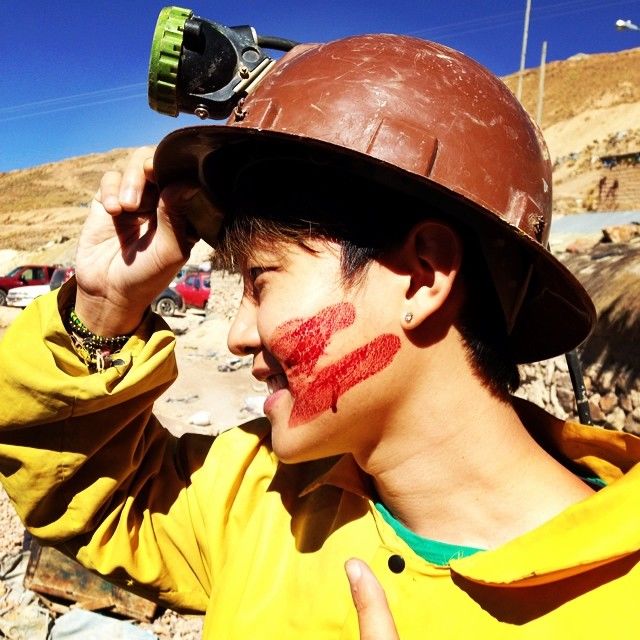


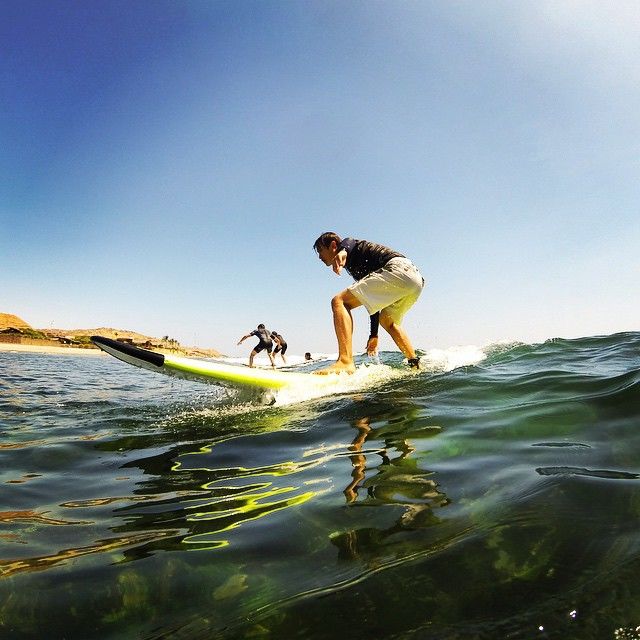


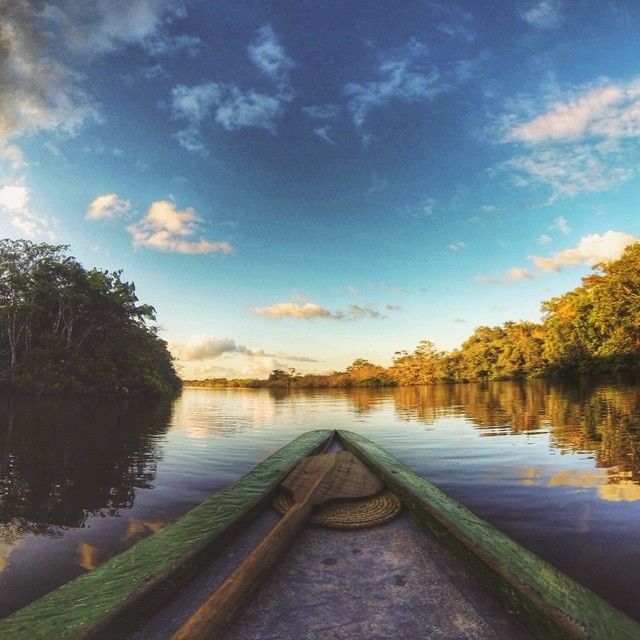






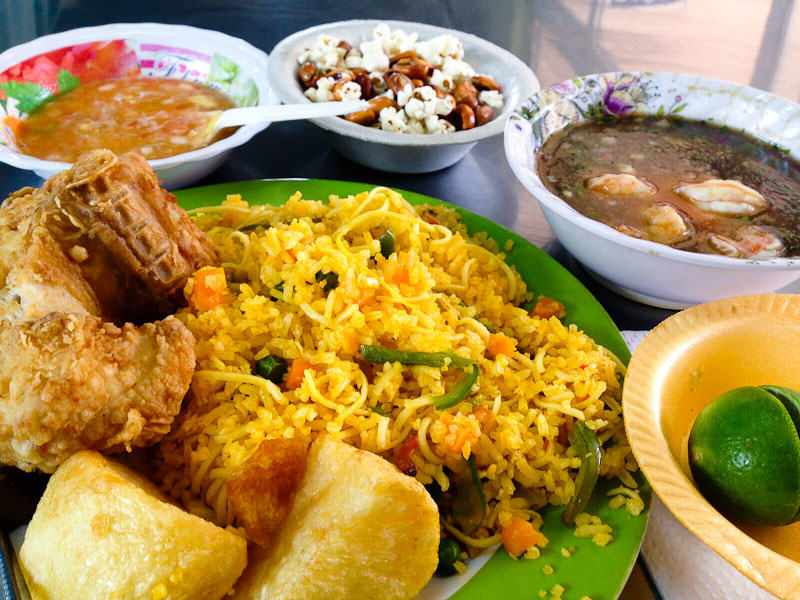

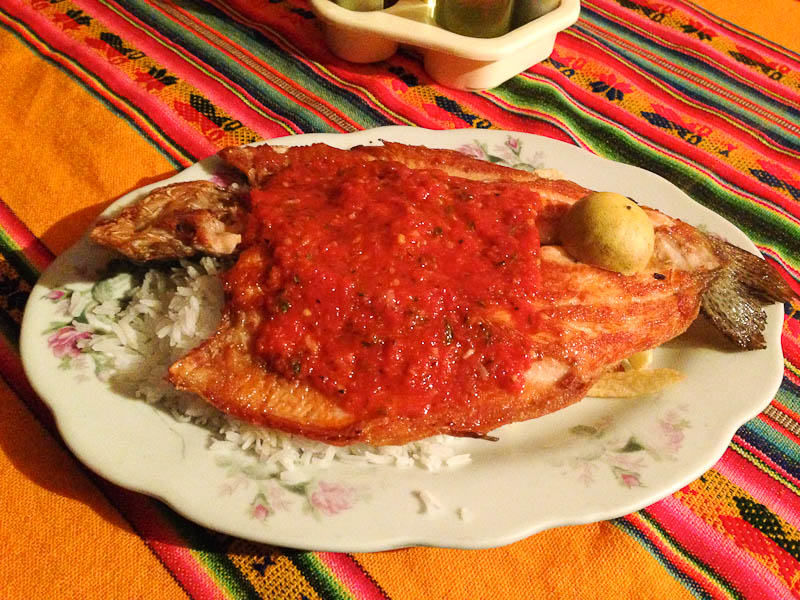
Quite a few friends have been asking about my recent trip to South America, and how I can afford to travel for so long. I usually say that it’s mainly a lifestyle choice, like putting aside money every month for travel instead of buying a new pair of shoes. But it’s also about making the right decisions while planning and traveling. So I guess South America on a budget will be a great opportunity to explain how I usually travel cheaper.
To get things straight, traveling on a budget doesn’t mean sleeping on the streets or couchsurfing with strangers (couchsurf for the experience, not only to save money). It also certainly doesn’t entail eating crap food and bread all day. This post isn’t about how to use the least money possible to travel South America. It is about what you can do to travel smart and stretch your dollar, leaving more money for unique travel experiences.
I did quite a lot of stuff which weren’t exactly cheap. I’ve travelled to the surreal Salar de Uyuni salt flats, mind blowing Iguazu Falls, ancient Machu Picchu, and the expensive Galapagos Islands. I even watched a World Cup match! I mean just take a look at my South America in 3 minutes trip video below, how on earth can this be only US$4.9k?!?
So what did the trip look like and how did I spend my money?
The bulk was spent on activities and transport. There were plenty of overlaps though. For example my 4D3N Amazon Tour included accommodation and food, and my hostel in Machachi included all 3 meals plus afternoon tea. It doesn’t really affect much, but if you want a better idea, check out the detailed breakdown at the end of the post!
So how is this possible?!I guess the easiest way to illustrate this is to run through the main categories, explaining what I did to keep costs low!
ACCOMMODATION(1) Hotel vs Hostels
If you have a fixed budget, would you rather splash $80 a night on a hotel compared to a $20 hostel, or use the $120 you saved over two nights rappelling down a waterfall? I know I’d definitely choose the latter. Hostels aren’t as terrible as many people think too. I always pick the ones with better reviews when possible, so they are often affordable, safe, nice, and very clean as well. What I love most though, is that most hostels have common areas where you can meet new people. I’ve actually found quite a few traveling buddies this way! If you like your own space, just book a private room with en suite toilets. Check out some of my favourite hostels from the trip below. Not bad eh?
TRANSPORT(2) Short Distance: Walk or take local transport
Unless I’m short on time or carrying lots of stuff, I always walk or take local public transport rather than taxis when moving within the town/city. I love walking and taking local buses/subways because you get to see so much more. Not only do you get to better understand how daily life is like for the locals, your chances of coming across something really interesting and non touristy is higher!
If language is a problem, just get some help from your hostel/hotel staff, learn a few useful phrases, and plan your route before heading out. I often team up with other travellers that know the language better than me as well. In certain places, you’ll have to be more aware of your valuables and keep them out of sight though. Just look purposeful, be alert, and it’ll be fine!
Pro-tip: I always use this offline map app called CityMaps2Go, which is available on both iTunes and Google Play Store. It uses your phone’s GPS and so you’ll always know where you are! It even has attractions info and all in the offline mode so no data charges.
(3) Long Distance: Buses vs Flights
When traveling longer distances between cities, it’s often a dilemma between taking long distance buses or flights. It’s mainly a cost vs time issue, and I usually pick whichever option is cheapest when I’m not short on time. The surprise here is that domestic flights can sometimes be cheaper so do check! Bus quality and safety also varies so do find out more. I remember taking the Cruz Del Sol bus in Peru which was very comfortable, included food, and even your own entertainment system with tons of movies! That said, long distance busses will usually be the cheaper option. Take the more comfortable overnight buses, so you can save on both accommodation and time since you’ll be sleeping.
Pro-tip: Earplugs and air pillows are a must for comfort! Many provide blankets, but it’s still good to have a warm jacket as as standby.
Useful Resources: Hostel staff, Rome to Rio, Skyscanner, Adioso
ACTIVITIES(4) Research & Planning
Activities are one thing I never save on whenever traveling. After all, these are the main experiences that make the trip! The problem is that sometimes there are tons of local companies offering similar things. To prevent getting ripped off, always do some research before engaging any of them. Google, Tripadvisor, blogs, and guidebooks are great places to start, but my favourite is still to talk to travellers who have just came back from wherever you are going. These are often the most honest and up to date advice you can find.
Useful Resources: Tripadvisor, Hostel staff, Word of Mouth
(5) Bargain & Leverage
The art of bargaining is a very useful skill to pick up. From acting nonchalant to sweet talking, you can save on quite a few bucks to spend on other things with some effort. Understand that bigger numbers mean leverage, so always group up with other travellers when possible. It’s also usually more fun in a bigger group!
However, I’m not saying you should bargain for hours just to get that $5 discount though. At the end of the day though, the $5 is probably worth a lot more to the vendor than you.
FOOD(6) Eat Local
They say that you never know a country until you have eaten local. Other than the really special restaurants, I try to walk a little further from the main streets, and dine at places where locals eat. These are usually cheaper and more authentic. Although I don’t understand what’s on the menu half the time, it’s super fun guessing and hoping that whatever you ordered tastes good! A typical day starts with hot local homely breakfast at the Mercado/market, Almuerzo/Lunch Set with soup and drink in-between sightseeing, and a better local/international meal for dinner. Some hostels even include a simple breakfast.
(7) Cook
I often carry a few pre-mixes from home on longer trips because I always miss Singapore food. It’s also cheaper and a great way to interact with other travellers in the hostels by sharing food. Whether it’s helping with food preparation or everyone cooking their own dish, it’s great fun using local ingredients to prepare what you usually use for cooking back home. Culture exchange through food!
(8) Save on drinks
Other than beer (social lubricant), I always avoid buying drinks while dining out. I even do this back home whenever possible because I feel that soft drinks are always overpriced. Water is better for you too.
Anyway, you can find the link to the full budget breakdown and itinerary here. I used the app Trail Wallet, which allowed me to export the .csv file. Added a few extra columns and renamed it a little for clarity. Date might be slightly off cause I only keyed in whenever I remembered, but it’s more or less accurate!
All these said, I do treat myself from time to time for a change from budget travel. At the end of the day, it’s about finding an optimal balance for yourself in order to stretch your budget and have a good time.

























